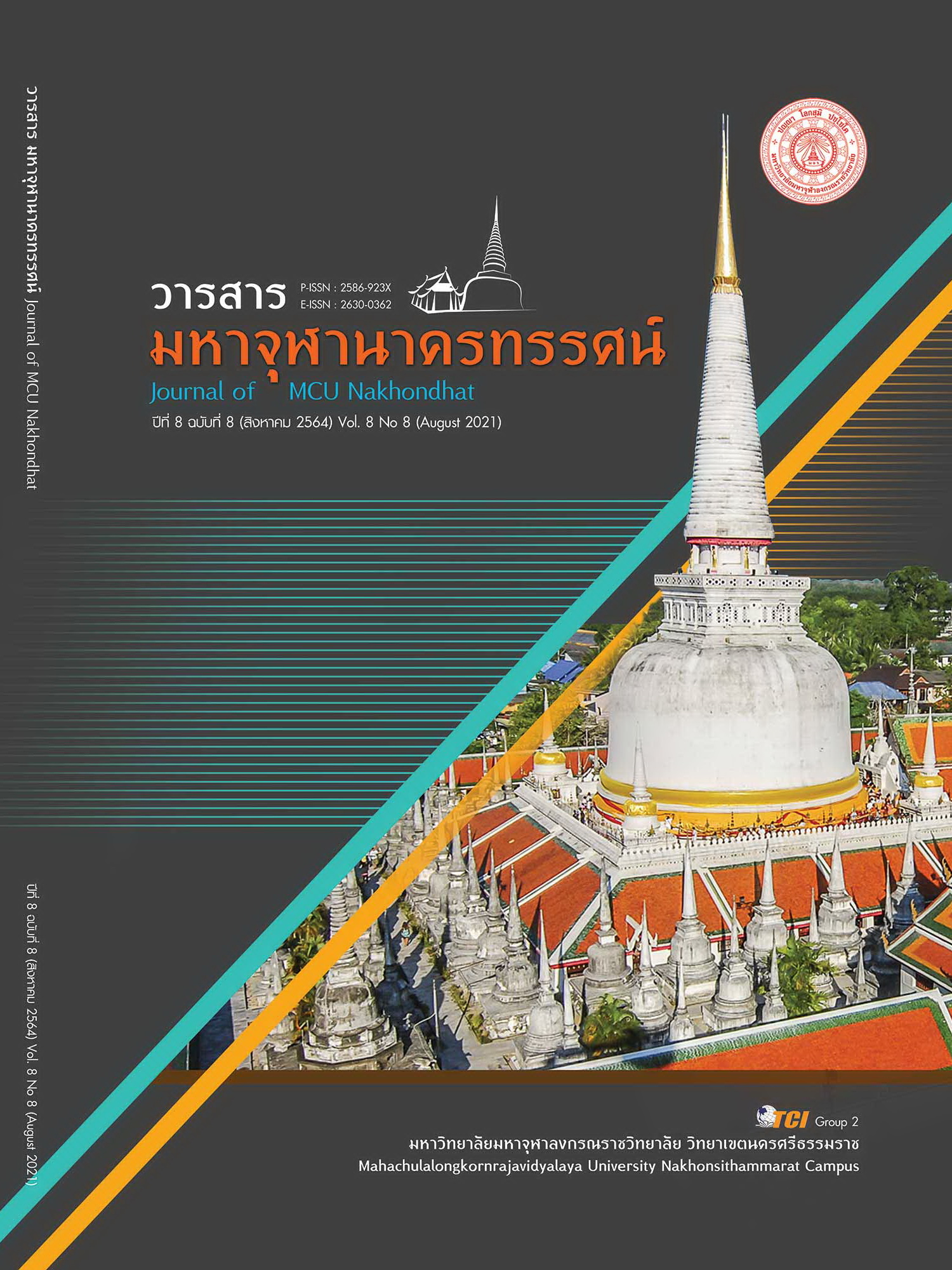A CONSTRUCTION OF THE SCIENTIFIC THINKING DIAGNOSTIC TEST FOR PRATOMSUKSA 6 STUDENTS
Main Article Content
Abstract
The objectives of this article are 1) To design a scientific thinking diagnostic test 2) To examine the quality of scientific thinking diagnostic tests of grade 6 students using experimental research methodology It consisted of a sample group of grade 6 students from 5 Satit Elementary Schools under the Higher Education Commission, totaling 400 people. using a multistage randomization method. (Multistage sampling) The scientific thinking diagnostic test consists of short answer questions, and the questions on the test will be daily situational circumstances which allows the students become simulated to utilize thinking skills, which the answering questions will be in order of four scientific thinking steps as follow: 1) Thinking to identify the problems 2) Thinking to hypothesize 3) Thinking to test the hypothesis and 4) Informational analytical thinking and conclude the answers of results of 40 questions and 10 situations. The result of the quality analysis of the scientific thinking diagnostic test are as follow: 1) The content fidelity index with 5 experts have been concluded that the content fidelity index considerably meets well the criteria with 0.80-1.00 2) Analysis of difficulty shows the value between 0.42-0.91 3) Analysis of discrimination shows the value between 0.22-0.56 and analysis of reliability in the whole version is 0.85, totaling 40 questions, 10 situations, with quality according to the specified criteria.
Article Details
References
ชลฤทัย ทวีแสง. (2559). ผลการใช้รูปแบบการจัดการเรียนรู้บนฐานเมต้าเลเวล เพื่อส่งเสริมการคิดเชิงวิทยาศาสตร์ นักเรียนระดับชั้นมัธยมศึกษาปีที่ 1. วารสารวิชาการเครือข่ายบัณฑิตศึกษามหาวิทยาลัยราชภัฏภาคเหนือ, 6(10), 87-102.
ธิดารัตน์ อินปาด๊ะ. (2554). ความสามารถในการคิดเชิงวิทยาศาสตร์ของนักเรียนชั้นมัธยมศึกษาปีที่ 3 ที่ได้รับการสอนแบบสืบเสาะหาความรู้ โดยเสริมกิจกรรมการคิดเชิงวิทยาศาสตร์. ใน วิทยานิพนธ์สาขาวิชาศิลปศาสตรมหาบัณฑิต. บัณฑิตวิทยาลัยมหาวิทยาลัยเชียงใหม่.
ธีระวัฒน์ การะเกตุ. (2561). การสร้างแบบทดสอบวินิจฉัยหลายตัวเลือกสี่ลำดับขั้น เพื่อศึกษามโนทัศน์ที่คลาดเคลื่อน วิชาชีววิทยา เรื่อง การแบ่งเซลล์ สำหรับนักเรียนชั้นมัธยมศึกษาปีที่ 4. ใน ปริญญานิพนธ์สาขาวิชาการวิจัยและพัฒนาศักยภาพมนุษย์. บัณฑิตวิทยาลัยมหาวิทยาลัยศรีนครินทรวิโรฒ.
นิตยาภรณ์ ศรีภาแลว. (2557). การสร้างแบบทดสอบวินิจฉัยข้อบกพร่องในการเรียน วิชาวิทยาศาสตร์ 5 เรื่อง พลังงานไฟฟ้า สำหรับนักเรียนชั้นมัธยมศึกษาปีที่ 3. ใน รายงานการวิจัย. มหาวิทยาลัยราชภัฏมหาสารคาม.
ประพันธ์ศิริ สุเสารัจ. (2556). การพัฒนาการคิด. กรุงเทพมหานคร: เทคนิคปริ้นติ้ง.
ยุพา วีระไวทยะ และปรียา นพคุณ. (2544). เทคนิคการสอนวิทยาศาสตร์ระดับประถมศึกษาตอนต้น. กรุงเทพมหานคร: มูลนิธิสดศรี-สฤษดิ์วงศ์.
ล้วน สายยศ และอังคณา สายยศ. (2543). เทคนิคการวัดผลการเรียนรู้. กรุงเทพมหานคร: สุวีริยาสรน์.
สำนักงานคณะกรรมการการศึกษาแห่งชาติและสำนักงานกองทุนสนับสนุนการวิจัย. (2541). วิกฤตการณ์วิทยาศาสตร์ศึกษาของไทย. กรุงเทพมหานคร: สำนักงานพัฒนานโยบายวิทยาศาสตร์ศึกษา สำนักงานคณะกรรมการการศึกษาแห่งชาติ.
สุทัศน์ บุญสิทธิ์. (2560). การพัฒนายุทธศาสตร์การจัดการเรียนรู้ตามแนวคิดการเรียนรู้โดยใช้ปัญหาเป็นฐานและเมตาคอกนิชัน เพื่อส่งเสริมความสามารถในการคิดเชิงวิทยาศาสตร์ และการคิดไตร่ตรอง ของนักเรียนระดับประถมศึกษา. วารสารศึกษาศาสตร์ มหาวิทยาลัยนเรศวร, 19(4), 253-264.
Bergere, T. & Boelryk, A. (2004). Applications of scientific thinking in the humanities and Social sciences. In 2 (Ed.), Prepared for the 15th International Conference on College Teaching and Learning. Canada: Georgia.
Boyden, J. M. (1970). Construction of a Diagnostic Test in Verbal Arithmetic Problem Solving at the Fifth Grade Level. Michigan: University Microfiles.
Kuslan, L. I. & Stone, A. H. (1969). Teaching Children Science : An Inquiry Approach. Belmont California: Wadsworth Publishing Company.
Oishin, B. B. (2007). Scientific thinking and modernity meet traditional culture. Phila Delphia: The University of the Art Press.
Paul, R. & Elder, L. (2003). A Miniature Guide for Student and Faculty to Scientific Thinking Foundation of Critical Thinking. Maryland: rowman littlefield publishers.

